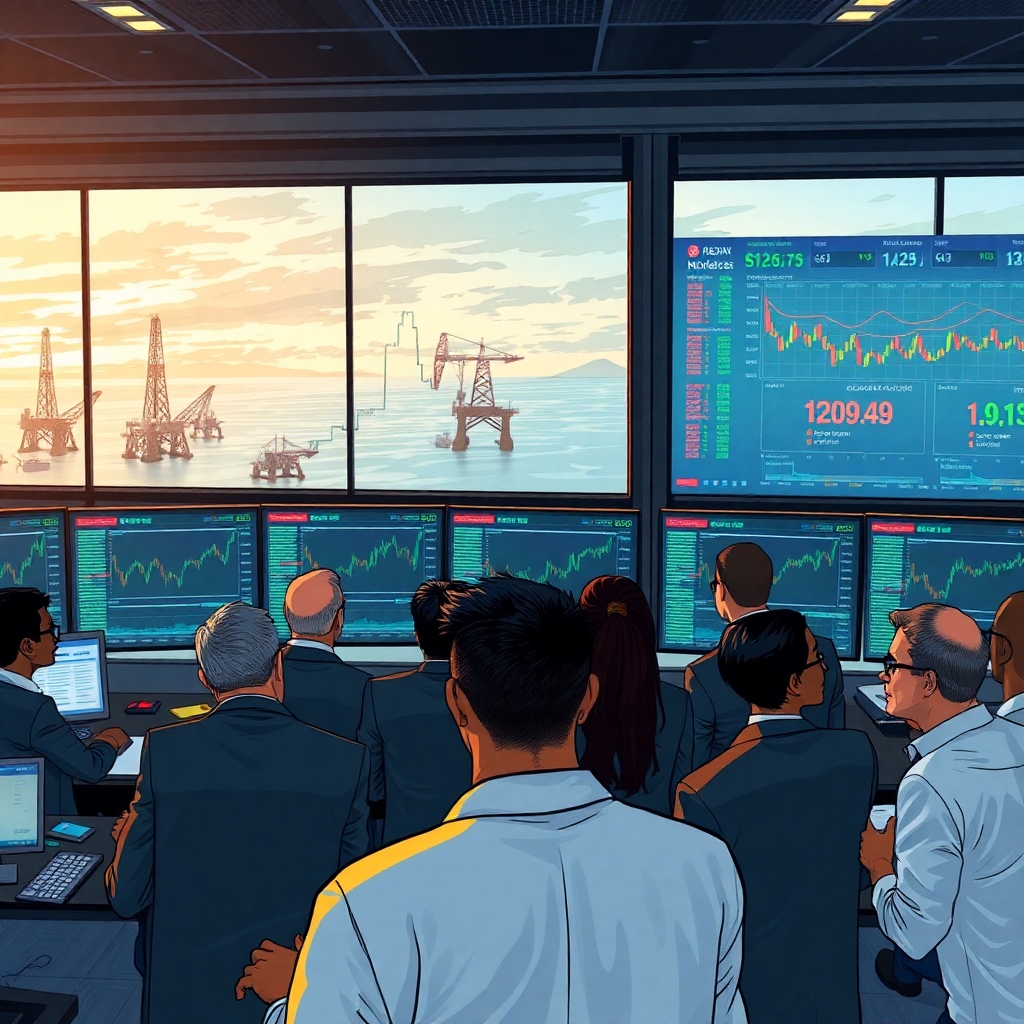Markets Show Surprising Stability Amid Middle East Tensions—Oil Recovers, Stocks Stay Level
Global financial markets are showing unexpected steadiness in the face of renewed geopolitical tensions in the Middle East. As headlines warn of rising conflict, especially near the vital Strait of Hormuz, investors have so far responded with caution, but not with fear. Oil prices have seen a mild rebound, and major stock indices remain mostly flat—suggesting that markets are preparing for potential risk, but not yet reacting with alarm.
This composed behavior reflects a deeper trend: increased investor confidence, improved risk management strategies, and the market’s growing ability to absorb shocks in a rapidly shifting world.
Rising Tensions, Measured Reactions
Over the past week, concerns have grown following reports of drone activity and encounters involving Western naval forces and oil tankers passing through the Strait of Hormuz. Iran’s Revolutionary Guard has also begun new naval exercises, a move many analysts see as a warning amid fragile nuclear negotiations.
While these developments are cause for concern, they haven’t yet led to disruptions in oil supply. However, the region remains a highly sensitive area where any escalation could ripple across global supply chains and financial systems.
Oil Prices Tick Higher, but No Drastic Moves
Brent crude has climbed back toward $91 per barrel, recovering from earlier dips, while U.S. benchmark WTI edged closer to $89. While that’s an increase, it’s a modest one—especially considering the rising tension in the region.
Analysts point to several factors behind the muted reaction:
- Steady Global Supply: OPEC+ countries haven’t hinted at cutting production, which is helping stabilize prices.
- Strategic Reserves: The U.S. is still releasing oil from its Strategic Petroleum Reserve (SPR), adding extra supply to the market.
- Diversified Energy Sources: Europe, in particular, has expanded its liquefied natural gas (LNG) infrastructure since 2022, easing reliance on oil from the Middle East.
“Traders are keeping a close eye on the situation,” said Daniel Hwang, an energy expert at ClearPoint Research. “But nothing has happened yet that would force a dramatic price move.”
Equities Hold the Line
Perhaps even more surprising is how steady the stock market has remained. Though a few defensive sectors—like commodities and utility stocks—saw small inflows, most major indices held firm throughout the week.
Performance of Major Indexes (Week-to-Date):
- S&P 500: +0.4%
- NASDAQ Composite: –0.2%
- FTSE 100: +0.3%
- Nikkei 225: +0.6%
- MSCI Emerging Markets: +0.1%
This stability points to a “wait and see” approach, with investors choosing to hold rather than retreat.
Oil Hits $100+/Barrel Risk Point if Strait of Hormuz Shuts: Goldman Sachs Warns – CrypTonaryx

Safe-Haven Assets Rise Slightly
Gold, U.S. Treasury bonds, and the Swiss franc—all classic safe-haven investments—have also seen small gains, though nothing extreme.
- Gold rose to $2,070/oz, close to its historical peak.
- 10-Year U.S. Treasury yields dropped a bit to 3.88%, signaling increased but controlled demand for low-risk bonds.
- The U.S. Dollar Index (DXY) stayed level, reflecting balanced investor positioning.
“These are cautious steps, not panic-driven actions,” noted Alyssa Perez of Artemis Global. “Today’s markets are more experienced. They know when to react—and when to wait.”
Crypto Holds Its Ground
Surprisingly, even volatile cryptocurrencies have remained steady. Bitcoin is hovering around the $100,000 mark, while Ethereum continues to trade near $6,000.
Analysts credit the stability to increased institutional interest and wider adoption. With regulated ETFs and more robust infrastructure in place, crypto is no longer just a speculative asset—it’s becoming part of broader investment portfolios.
BTCUSD: Gráfico y precio Bitcoin — TradingView
Investor Mood: Watching, Not Fleeing
Surveys from Bloomberg and Reuters indicate that fund managers remain cautiously optimistic. Unless conflict intensifies significantly, most expect little impact on earnings or portfolios in the short term.
Retail traders are showing similar behavior. Data from apps like Robinhood and eToro suggest investors are shifting toward energy, defense, and dividend-heavy stocks—without making dramatic moves.
“People are tweaking their strategies, not bailing out,” said Jamil Hussain of TruBridge Capital. “It’s not about fear; it’s about being prepared.”
What Could Trigger a Bigger Response?
While markets are currently calm, experts warn that several flashpoints could spark sharp changes:
- A direct clash in the Strait of Hormuz
- Cyberattacks or strikes on vital infrastructure
- A total collapse of diplomatic talks between Iran and Western nations
- Surprise policy shifts from OPEC+ regarding oil output
Any of these could shift the tone dramatically, especially in energy markets and emerging economies.
Central Banks Unmoved—for Now
So far, monetary policy hasn’t shifted in response to the tension. The U.S. Federal Reserve kept interest rates between 4.25% and 4.5% in its most recent meeting and signaled no immediate changes unless inflation climbs or supply chains are hit.
The ECB and Bank of England echoed this, maintaining their current stances while monitoring developments closely.
Conclusion: Navigating Uncertainty with Confidence
Despite the tensions brewing in the Middle East, global markets are showing an encouraging level of maturity. Oil prices, equities, and even cryptocurrencies are responding with a sense of caution, not crisis.
Investors appear to be relying on diversified strategies, strong fundamentals, and measured risk management—showing that in today’s unpredictable world, preparation and perspective are more valuable than panic.
